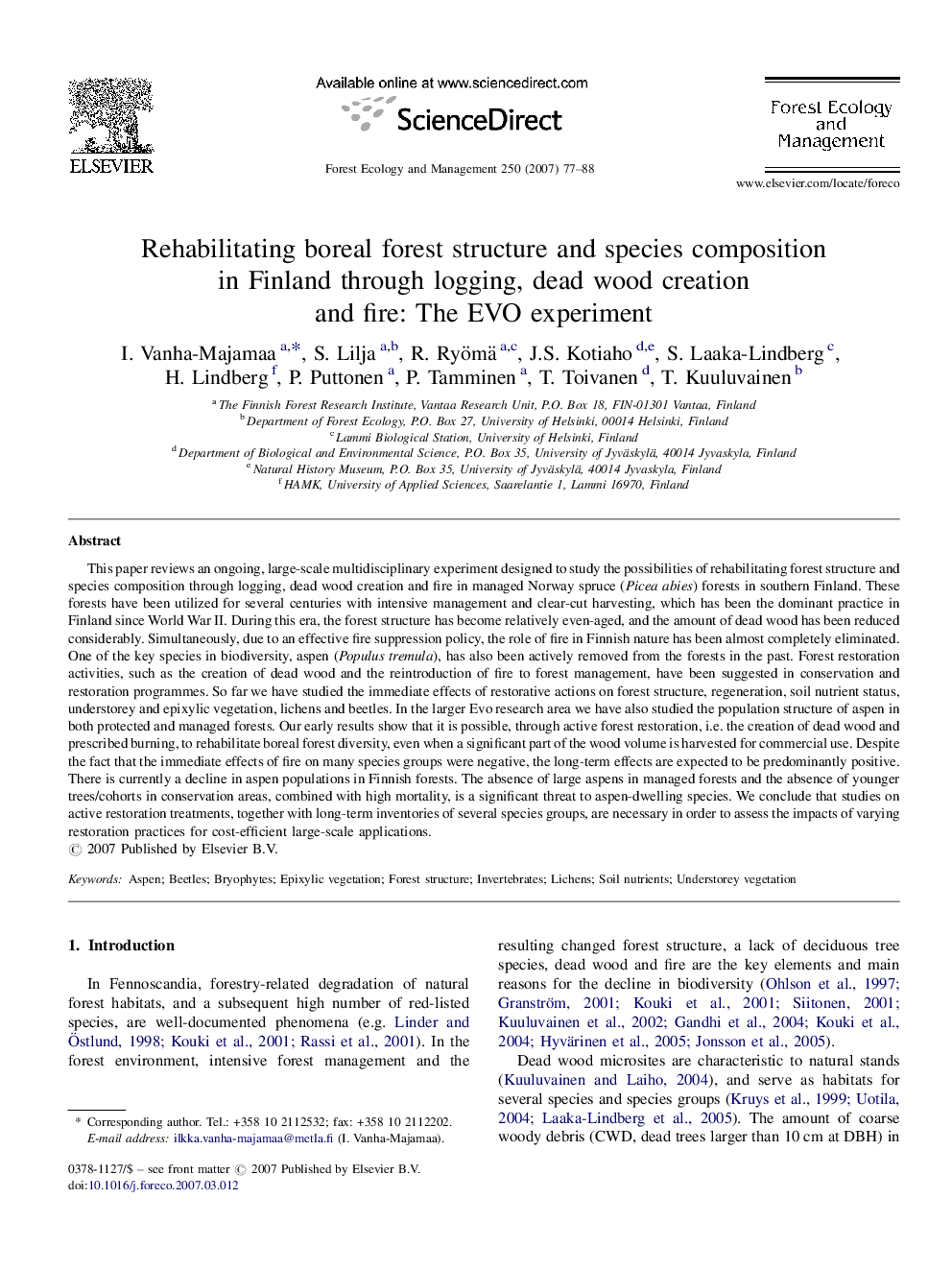| کد مقاله | کد نشریه | سال انتشار | مقاله انگلیسی | نسخه تمام متن |
|---|---|---|---|---|
| 89925 | 159359 | 2007 | 12 صفحه PDF | دانلود رایگان |

This paper reviews an ongoing, large-scale multidisciplinary experiment designed to study the possibilities of rehabilitating forest structure and species composition through logging, dead wood creation and fire in managed Norway spruce (Picea abies) forests in southern Finland. These forests have been utilized for several centuries with intensive management and clear-cut harvesting, which has been the dominant practice in Finland since World War II. During this era, the forest structure has become relatively even-aged, and the amount of dead wood has been reduced considerably. Simultaneously, due to an effective fire suppression policy, the role of fire in Finnish nature has been almost completely eliminated. One of the key species in biodiversity, aspen (Populus tremula), has also been actively removed from the forests in the past. Forest restoration activities, such as the creation of dead wood and the reintroduction of fire to forest management, have been suggested in conservation and restoration programmes. So far we have studied the immediate effects of restorative actions on forest structure, regeneration, soil nutrient status, understorey and epixylic vegetation, lichens and beetles. In the larger Evo research area we have also studied the population structure of aspen in both protected and managed forests. Our early results show that it is possible, through active forest restoration, i.e. the creation of dead wood and prescribed burning, to rehabilitate boreal forest diversity, even when a significant part of the wood volume is harvested for commercial use. Despite the fact that the immediate effects of fire on many species groups were negative, the long-term effects are expected to be predominantly positive. There is currently a decline in aspen populations in Finnish forests. The absence of large aspens in managed forests and the absence of younger trees/cohorts in conservation areas, combined with high mortality, is a significant threat to aspen-dwelling species. We conclude that studies on active restoration treatments, together with long-term inventories of several species groups, are necessary in order to assess the impacts of varying restoration practices for cost-efficient large-scale applications.
Journal: Forest Ecology and Management - Volume 250, Issues 1–2, 15 October 2007, Pages 77–88